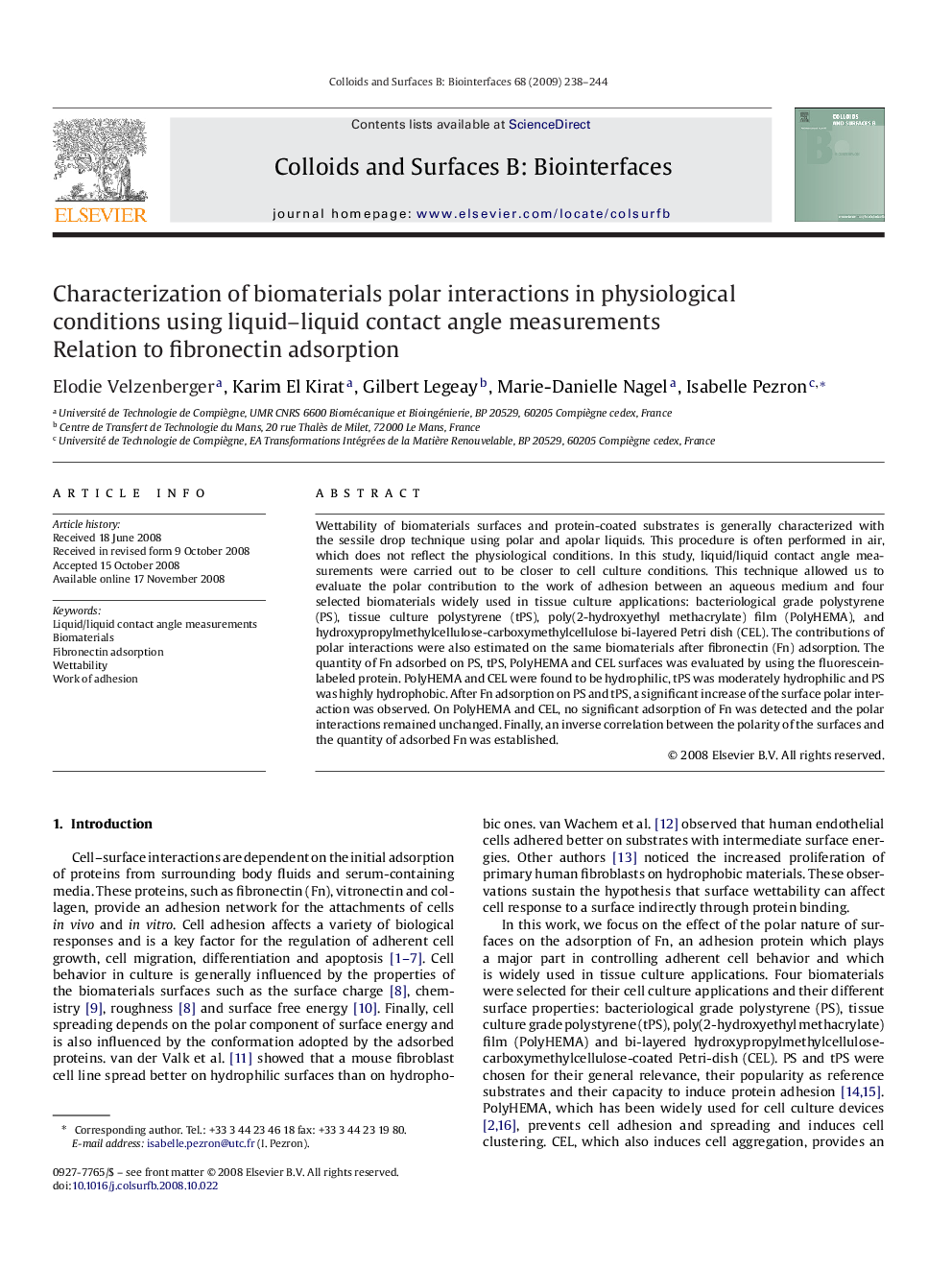| Article ID | Journal | Published Year | Pages | File Type |
|---|---|---|---|---|
| 602471 | Colloids and Surfaces B: Biointerfaces | 2009 | 7 Pages |
Wettability of biomaterials surfaces and protein-coated substrates is generally characterized with the sessile drop technique using polar and apolar liquids. This procedure is often performed in air, which does not reflect the physiological conditions. In this study, liquid/liquid contact angle measurements were carried out to be closer to cell culture conditions. This technique allowed us to evaluate the polar contribution to the work of adhesion between an aqueous medium and four selected biomaterials widely used in tissue culture applications: bacteriological grade polystyrene (PS), tissue culture polystyrene (tPS), poly(2-hydroxyethyl methacrylate) film (PolyHEMA), and hydroxypropylmethylcellulose-carboxymethylcellulose bi-layered Petri dish (CEL). The contributions of polar interactions were also estimated on the same biomaterials after fibronectin (Fn) adsorption. The quantity of Fn adsorbed on PS, tPS, PolyHEMA and CEL surfaces was evaluated by using the fluorescein-labeled protein. PolyHEMA and CEL were found to be hydrophilic, tPS was moderately hydrophilic and PS was highly hydrophobic. After Fn adsorption on PS and tPS, a significant increase of the surface polar interaction was observed. On PolyHEMA and CEL, no significant adsorption of Fn was detected and the polar interactions remained unchanged. Finally, an inverse correlation between the polarity of the surfaces and the quantity of adsorbed Fn was established.
